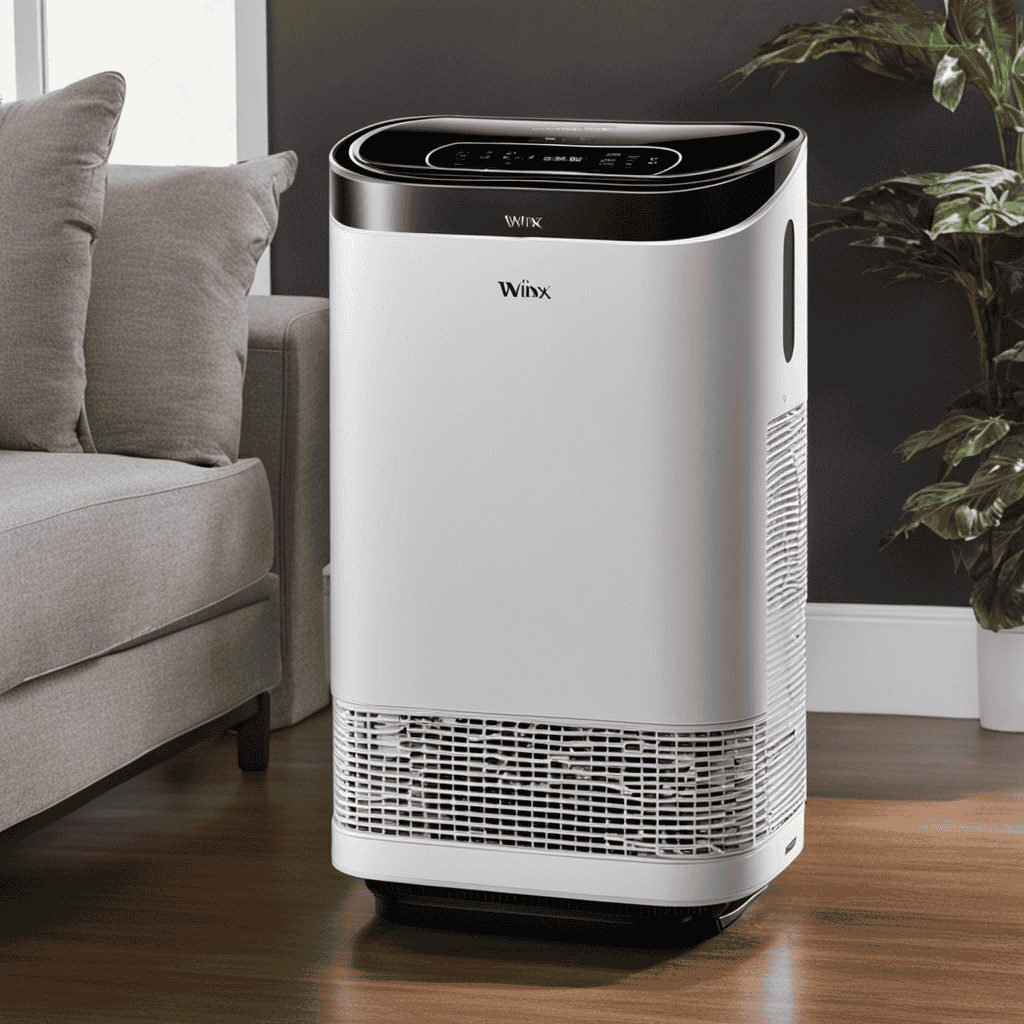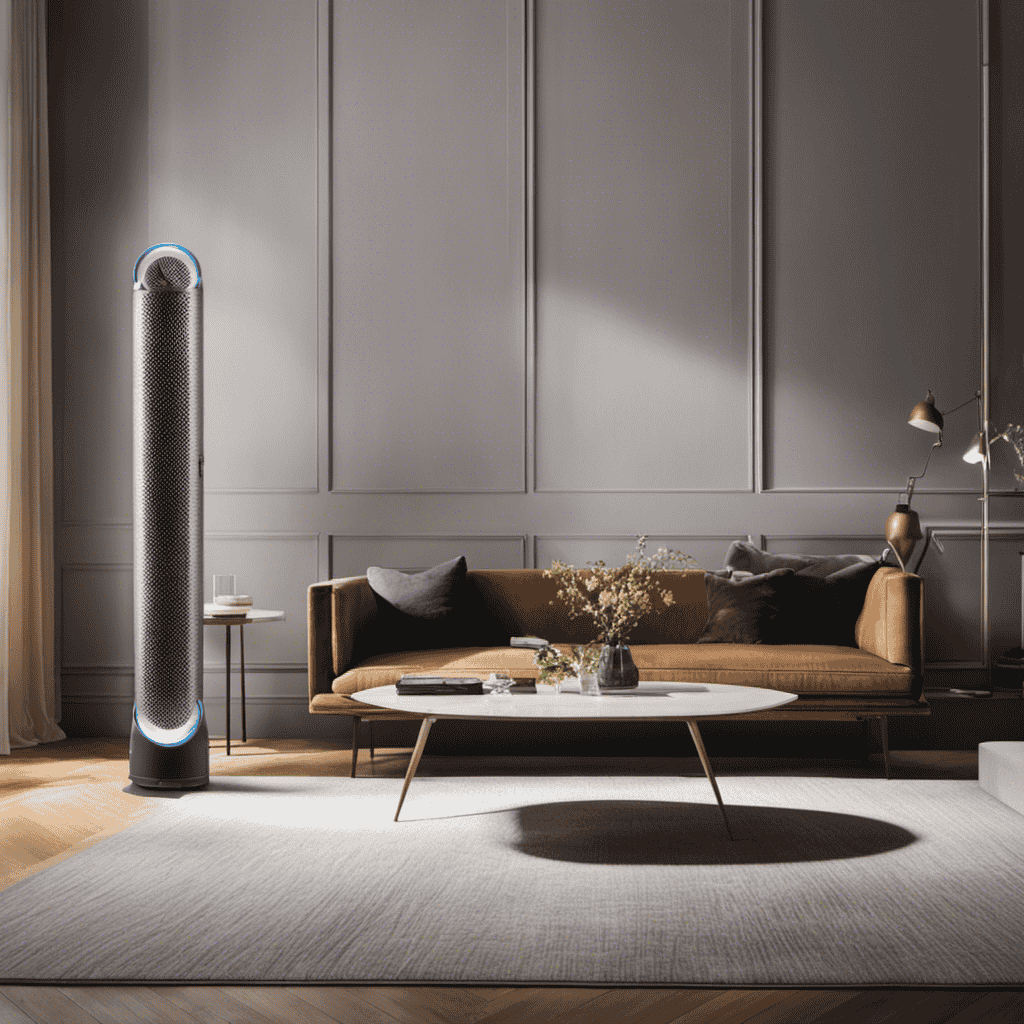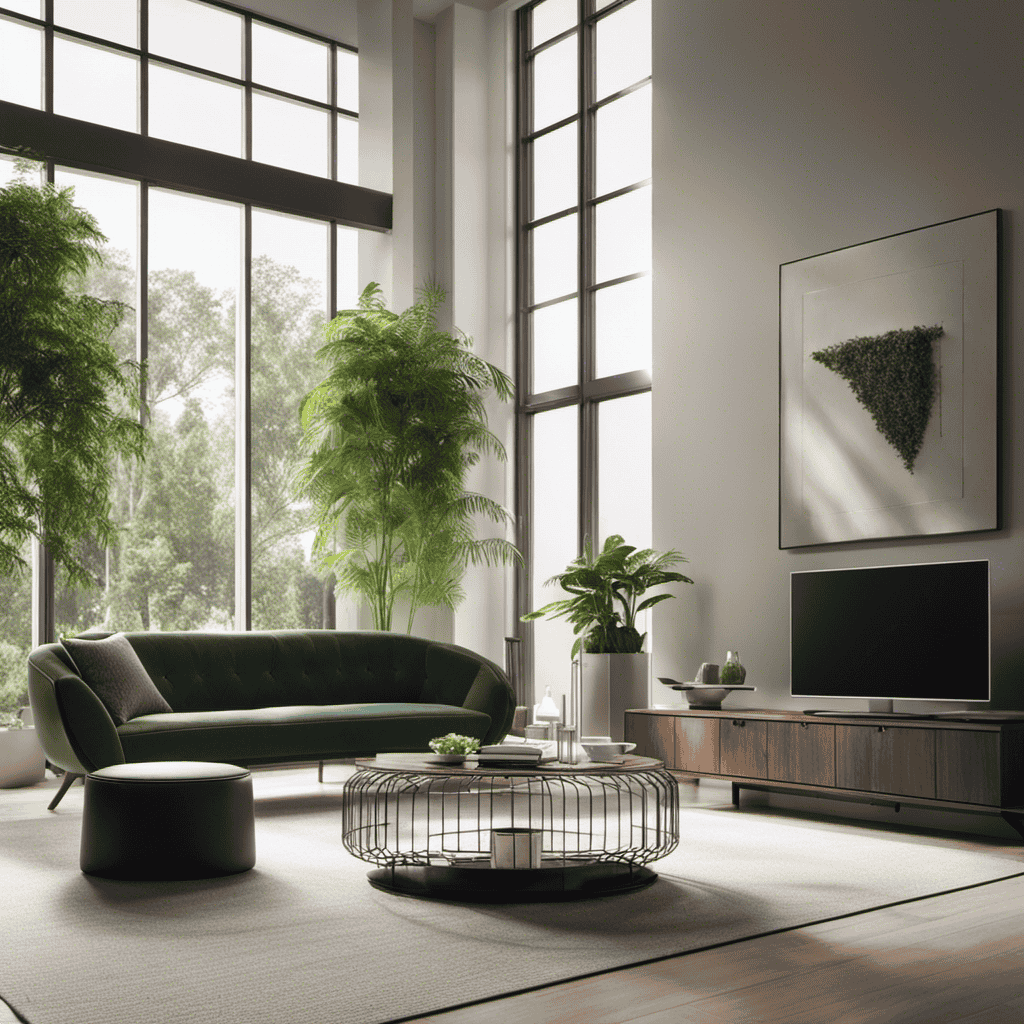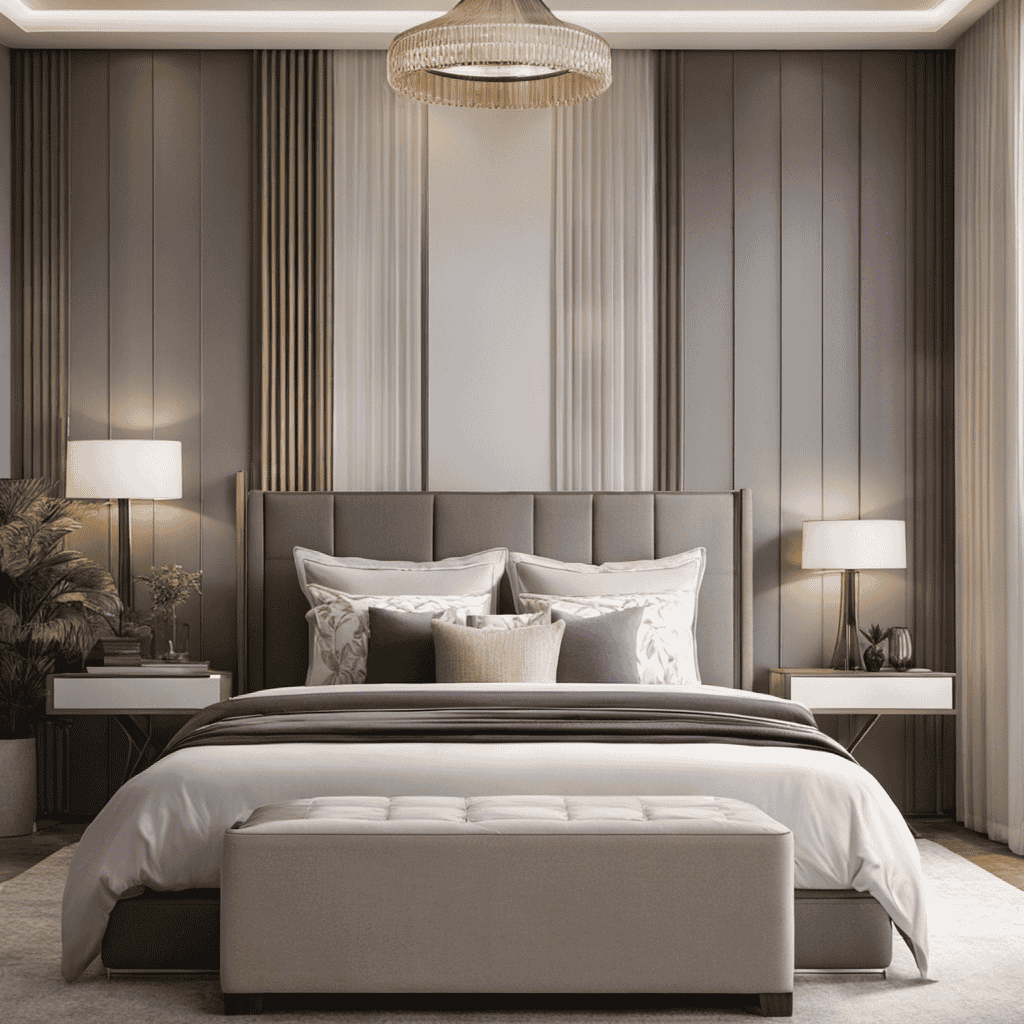Hello there, everyone! Have you ever experienced a reduction in the air circulation of your dependable Winix air purifier? No need to worry! This article will explore the potential reasons behind this perplexing problem.
We’ll explore the impact of clogged filters, the importance of regular maintenance, and how dust and debris can wreak havoc on air flow. Plus, we’ll shed light on the role of the fan and potential motor issues.
Stick around for some troubleshooting tips to restore that refreshing air flow you love. Let’s get to the bottom of this, shall we?
Key Takeaways
- Clogged or dirty filters can cause decreased air flow in a Winix air purifier.
- Regular filter maintenance, including cleaning or replacement, is crucial to prevent airflow obstruction and maintain optimal performance.
- Accumulation of dust, dirt, and pet dander on filters can obstruct airflow and reduce the efficiency of the air purifier.
- Regular maintenance of filters is important for cleaner indoor air, removal of pollutants, and improved respiratory health.
Possible Causes of Decreased Air Flow
One possible cause for the decreased air flow in your Winix air purifier could be a clogged or dirty filter. When the filter becomes filled with dust, pet dander, and other particles, it restricts the airflow and reduces the efficiency of the purifier.
Additionally, high humidity levels can also impact the air flow. Moisture in the air can cause the filter to become damp and sticky, further obstructing the flow of air.
Pets can also contribute to decreased air flow efficiency. Their fur, dander, and other allergens can accumulate in the filter, causing it to clog more quickly.
Regularly cleaning or replacing the filter is essential to maintain optimal air flow and ensure that your Winix air purifier effectively removes airborne pollutants from your indoor environment.
Clogged Filters and Their Impact on Air Flow
When it comes to maintaining optimal air flow in an air purifier, the importance of regular filter maintenance can’t be overstated. Clogged filters can significantly obstruct the airflow, leading to decreased performance and efficiency of the device.
Understanding the causes of airflow obstruction is crucial. Accumulation of dust, dirt, and pet dander on the filters can cause issues. It’s important to prevent and address these potential issues.
Filter Maintenance Importance
To maintain optimal air flow in your Winix air purifier, you should regularly clean and replace the filters. Dirty filters can have a significant impact on air quality, as they become clogged with dust, allergens, and other particles over time. This can lead to reduced airflow and decreased efficiency of the air purifier. Regular maintenance of the filters is essential to ensure that the air purifier continues to effectively remove pollutants from the air, providing you with cleaner and healthier indoor air. Using a Winix air purifier offers numerous benefits, such as improved indoor air quality, reduction in allergens and odors, and enhanced respiratory health. By properly maintaining the filters, you can maximize the performance of your Winix air purifier and enjoy the benefits it provides.
| Column 1 | Column 2 | Column 3 |
|---|---|---|
| Improved indoor air quality | Reduction in allergens and odors | Enhanced respiratory health |
Airflow Obstruction Causes
Regularly cleaning and replacing the filters in my air purifier prevents obstructions that can decrease airflow and reduce the efficiency of the machine. However, there are other causes of airflow restriction that can lead to decreased air flow in air purifiers.
One common cause is a build-up of dust and debris on the vents or fan blades. This can be remedied by simply cleaning the vents and fan blades with a soft brush or cloth.
Another cause of airflow restriction is a clogged or dirty air intake. This can be resolved by checking and cleaning the air intake regularly.
Additionally, a blocked or damaged exhaust vent can also restrict airflow.
Troubleshooting air flow problems involves identifying and addressing these causes to ensure optimal performance of the air purifier.
The Importance of Regular Filter Maintenance
If you don’t clean or replace your air purifier’s filters regularly, the air flow can decrease significantly. Regular maintenance benefits your air purifier in a number of ways, ensuring that it continues to function effectively and efficiently. Here are some cleaning techniques to keep in mind:
- Vacuuming: Use a soft brush attachment to remove dust and debris from the outer surface of the filter.
- Washing: If your filter is washable, rinse it gently with warm water and mild detergent. Allow it to air dry completely before reinserting.
- Tapping: Tap the filter gently against a hard surface to dislodge any trapped particles.
- Blowing: Use compressed air or a hairdryer on a cool setting to blow away dust and dirt from the filter.
- Replacement: If your filter is not washable, make sure to replace it according to the manufacturer’s recommendations.
How Dust and Debris Can Affect Air Flow
When it comes to maintaining optimal air flow in your air purifier, two key factors to consider are dust clogging air vents and debris blocking fan blades.
Over time, dust particles can accumulate and block the air vents, restricting the flow of air through the purifier. Additionally, debris such as pet hair or lint can get trapped in the fan blades, reducing their effectiveness in circulating air.
Proper cleaning and regular maintenance of these components can help ensure efficient air flow and improve the overall performance of your air purifier.
Dust Clogging Air Vents
The air flow has decreased in my Winix air purifier because the air vents are clogged with dust. This can happen over time as the purifier pulls in and filters the air in the room. When the vents become clogged, it restricts the airflow and reduces the overall effectiveness of the purifier.
To address this issue, there are a few steps you can take:
- Regularly clean the air vents to remove any accumulated dust and debris.
- Check the fan for any signs of malfunction, such as unusual noises or lack of movement.
- Ensure that the air purifier is placed in a well-ventilated area to allow for proper air circulation.
- Consider upgrading the air filter to a higher quality option to prevent clogging.
- Schedule regular maintenance and cleaning of the air purifier to keep it running smoothly.
Debris Blocking Fan Blades
After discovering that the air vents in my Winix air purifier were clogged with dust, I decided to investigate further to understand why the air flow had decreased.
Upon closer inspection, I realized that the fan blades were also blocked by debris. This fan malfunction was likely the main cause of the reduced air circulation. When the fan blades are obstructed, they are unable to spin at their full capacity, resulting in a decrease in airflow.
To resolve this issue, I carefully cleaned the fan blades, ensuring that all debris was removed. After cleaning, I noticed a significant improvement in the air flow of my air purifier.
Regularly checking and cleaning the fan blades is crucial to maintaining optimal performance and air circulation in your air purifier.
Understanding the Role of the Fan in Air Flow
To understand why the air flow in your Winix air purifier has decreased, you should know that the fan plays a crucial role. The fan is responsible for drawing in air and pushing it through the filters, ensuring effective purification.
There are several factors that can affect the fan’s performance, including:
-
Fan speed control: The speed at which the fan operates directly impacts the air flow. If the fan speed is set to a low level, the air flow will be reduced, resulting in decreased purification efficiency.
-
Impact of air flow on air purification efficiency: Adequate air flow is essential for optimal air purification. When the air flow decreases, the purifier may not be able to effectively capture and remove airborne pollutants, compromising its efficiency.
-
Clogged filters: Over time, the filters in your air purifier can become clogged with dust, debris, and pollutants, obstructing the air flow. Regular filter maintenance is essential to ensure proper air flow and efficient purification.
-
Blocked air intake or exhaust vents: Objects or obstructions near the air intake or exhaust vents can restrict the flow of air, leading to decreased air flow in the purifier.
-
Fan motor issues: A faulty or malfunctioning fan motor can result in decreased air flow. If you suspect an issue with the fan motor, it is best to contact the manufacturer or a qualified technician for assistance.
Understanding the role of the fan in air flow is crucial to diagnosing and resolving any issues with decreased air flow in your Winix air purifier. By ensuring proper fan speed control, regular filter maintenance, and unobstructed air vents, you can maintain optimal air purification efficiency.
Potential Issues With the Motor and Air Flow
If you suspect an issue with your fan motor, you should contact the manufacturer or a qualified technician for assistance. A motor malfunction can cause a decrease in air flow in your Winix air purifier. To help you understand the potential issues with the motor and air flow, I have created a table below highlighting common problems and troubleshooting techniques.
| Potential Issue | Troubleshooting Technique |
|---|---|
| Fan motor not running | Check power supply and connections |
| Motor making unusual noise | Clean fan blades and check for debris |
| Motor overheating | Ensure proper ventilation and clean air intake |
Troubleshooting Tips for Restoring Air Flow in Your Winix Air Purifier
You can try cleaning the filters and checking for any blockages to improve the air flow in your Winix air purifier. Here are some troubleshooting steps to help you resolve common air purifier problems:
- Clean the pre-filter by vacuuming or rinsing it with water.
- Remove and clean the HEPA filter according to the manufacturer’s instructions.
- Check the air intake vents for any debris or obstructions.
- Ensure that the purifier is placed in an open area with good airflow.
- Reset the purifier by unplugging it for a few minutes and then plugging it back in.
By following these troubleshooting steps, you can optimize the performance of your Winix air purifier and restore proper air flow.
If these steps do not resolve the issue, it may be necessary to contact customer support for further assistance.
Frequently Asked Questions
How Long Does It Take for the Filters in a Winix Air Purifier to Become Clogged?
Regular maintenance and replacement of filters in a Winix air purifier is essential to prevent clogging. Using the purifier in a dusty environment can contribute to faster filter clogging.
Can Using a Vacuum Cleaner on the Filters Help Improve Air Flow?
Using a vacuum cleaner on the filters can help improve air flow, but it’s not the most effective method. Using a brush instead is better. Also, replacing the filters regularly is crucial for maintaining optimal air flow in your Winix air purifier.
Are There Any Environmental Factors That Can Affect Air Flow in a Winix Air Purifier?
Indoor pollutants and seasonal changes can both affect the air flow in a Winix air purifier. These factors can clog the filters, reducing airflow and decreasing the purifier’s effectiveness in cleaning the air.
Is It Normal for the Fan to Make Noise When the Air Flow Is Decreased?
Yes, it is normal for the fan to make noise when the air flow is decreased. This could be due to the effect of dust accumulation on air flow or the impact of filter replacement on air flow.
Can Using the Air Purifier on Its Highest Speed Setting Decrease the Lifespan of the Motor?
Using the air purifier on its highest speed setting can potentially impact the lifespan of the motor. Regular maintenance, such as cleaning and replacing filters, can help extend the motor’s life and ensure optimal performance.
Conclusion
In conclusion, it is crucial to address the issue of decreased air flow in your Winix air purifier promptly.
By regularly maintaining and cleaning the filters, you can prevent clogging and ensure optimal air flow.
Additionally, understanding the role of the fan and troubleshooting any potential motor issues can help restore the air flow effectively.
Just like a river flowing freely, a well-functioning air purifier circulates clean and fresh air throughout your space, creating a healthier and more comfortable environment for you and your loved ones.










